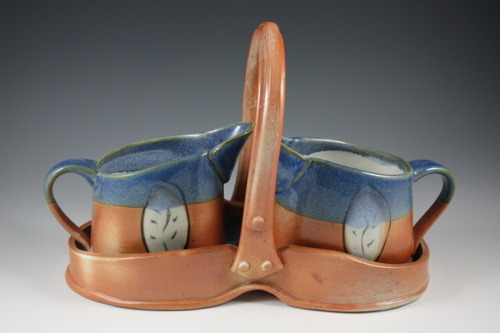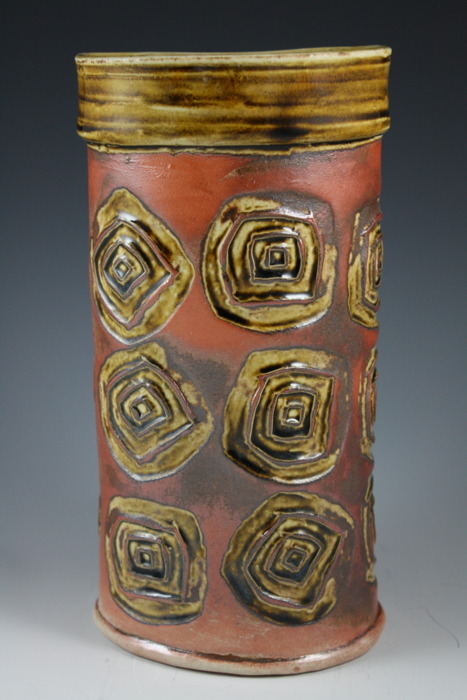
You are in this field for more than ten years now. Tell us how you discovered the passion for ceramics.
My passion for ceramics came rather late. Having been born and raised on a farm in Northwest Missouri, far away from big city influences, exposure to the arts was minimal. Art classes in my small-town school were non-existent past grade school—with a student body of 60 students in grades 1 through 12, resources were focused on the practical skills and knowledge essential to a farming community.
My interest in the arts began in college, where I was first exposed to fine arts through an Art Appreciation course. After earning a degree in Business, and subsequently a Masters Degree, I was firmly entrenched in the corporate world. The spark that ignited my interest in art, however, continued to smolder, but it wasn’t until I witnessed a wheel-throwing demonstration at a local art fair that my desire to delve into clay became real. After 13 years in business, I returned to school with a whole-hearted desire to master the art and craft of clay, ultimately earning a BFA degree in Ceramics. I have never looked back.
You are mostly creating pottery pieces. How would you explain your attraction for functional ceramics?
I was initially attracted to the wheel. Learning to throw basic utilitarian forms was a joy to me. The tactile sensation of wet clay is so seductive! However, there are some ideas that cannot be conveyed by functional pots. Thus, I also do sculptural work. I like the idea of making work that is approachable both on an intimate and intellectual level.
Making functional work appeals to the part of me that wants to connect personally with the user. I love the idea that the work will be handled, and I strive to make work that goes beyond the basic utilitarian form. In other words, I strive to make the work “special” for the user, in an effort to elevate the mundane, e.g., drinking a cup of tea, into the conscious enjoyment of the daily ritual, rather than a routine act.
I love to play with form, so even in my functional work I like to bring in a sculptural sensibility. The functional and sculptural forms play off each other—one idea leads to the next—so for me, the back and forth of sculptural vs. functional is essential.
There is a remarkable touch of sensibility in your decorations. Tell us more about how you decorate and where do you get inspiration from.
I am intrigued by the fact that we as humans are so connected to the earth, from the food we eat to the ceramic cup we drink from. I am drawn to relatively matte surfaces, perhaps because of their tactile nature or maybe because of their relationship to nature itself.
I want the clay to look like clay and have been drawn to the salt firing process because of the ability to let the beauty of the clay body speak for itself as it fuses with salt. The element of surprise that arises from firing to firing with the phenomenon of flashing and variation of salt distribution has always held great interest for me.
Peter Voulkos voiced my sentiments exactly when he spoke about glazes:
“Lost my glaze book. Stole most of it to start with. I used to buy it at the glaze store and put it on real thin, barely fogged on with a spray. It’s not how many glazes you use. It’s how you use what you’ve got. I don’t like to use glazes. They cover up the detail. I like the clay to pick up on my own fingerprints. I like to put my own marks on it. I don’t like pretty glazes; they’re misleading. I don’t have too much of a glaze vocabulary. If the clay comes out of the fire, it’s good if it turns you on.”
The glazes I do use are applied sparingly, and as an accent to the form. Prior to decoration, some pieces are slipped, either at leather hard or bisque stage. The form itself dictates which glaze and what decoration will be applied. It is very frustrating for me to look at a form I have made with no idea of how to decorate it. It is a recipe for disaster!
I believe my pieces reflect a sense of place. I am greatly influenced by my surroundings since moving to Wyoming—the Red Butte, Red Canyon, sagebrush and ancient Juniper trees. Unconsciously, these elements seem to find their way into my work. I think as artists, our personal styles evoke not only our personalities, but also our roots. I would be quite uncomfortable at this point in my career trying to emulate the work of younger ceramists.
You have joined different associations and groups: how important is a professional affiliation for your personal development?
Very important! They can be a lifeline for technical support as well as a resource for knowledge and opportunities. As artists, we must be pro-active in seeking recognition for our work. Some of our most celebrated ceramists have mastered the art of social networking and use the latest technology to promote their work. That being said, good marketing must go hand in hand with quality artwork.
Over the past year, I have been involved in forming a group of local ceramic artists, Potters of the Wind Rivers (POWR). Our goal is to exchange ideas, offer technical support, sponsor workshops and most importantly, develop an appreciation for the ceramic arts in our area. This affiliation has been rewarding in so many ways!

Jaunty Pouring Vessel II, 9” x 7”, Wheel-Thrown and Altered, Salt-Fired Porcelain with Glaze Decoration, Cone Ten, 2011
What are you currently working on and what are your aspirations? Where can we see you in the near future?
I will be in Seattle for NCECA this year. Although I don’t attend every year, the event is always inspirational. It is important as an artist to keep watching, looking and learning in order to keep the work fresh.
I am constantly testing new glaze and slip recipes, refining old forms and experimenting with new ones. I am anxiously preparing for the next firing, where I will be testing new slip recipes formulated from the clay surrounding my property.
Currently in process is a proposal for a group show of the POWR group with the Lander Art Center. From a personal perspective, my goal for the coming year is to increase gallery representation for my work.
* Rose Slivka and Karen Tsujimoto The Art of Peter Voulkos (New York: Kodansha America, Inc., 1995), p. 60.
By Andra Baban
Published in Ceramics Now Magazine Issue 2.
View Deborah Britt’s profile on Ceramics Now.
Visit Deborah Britt’s website.





















